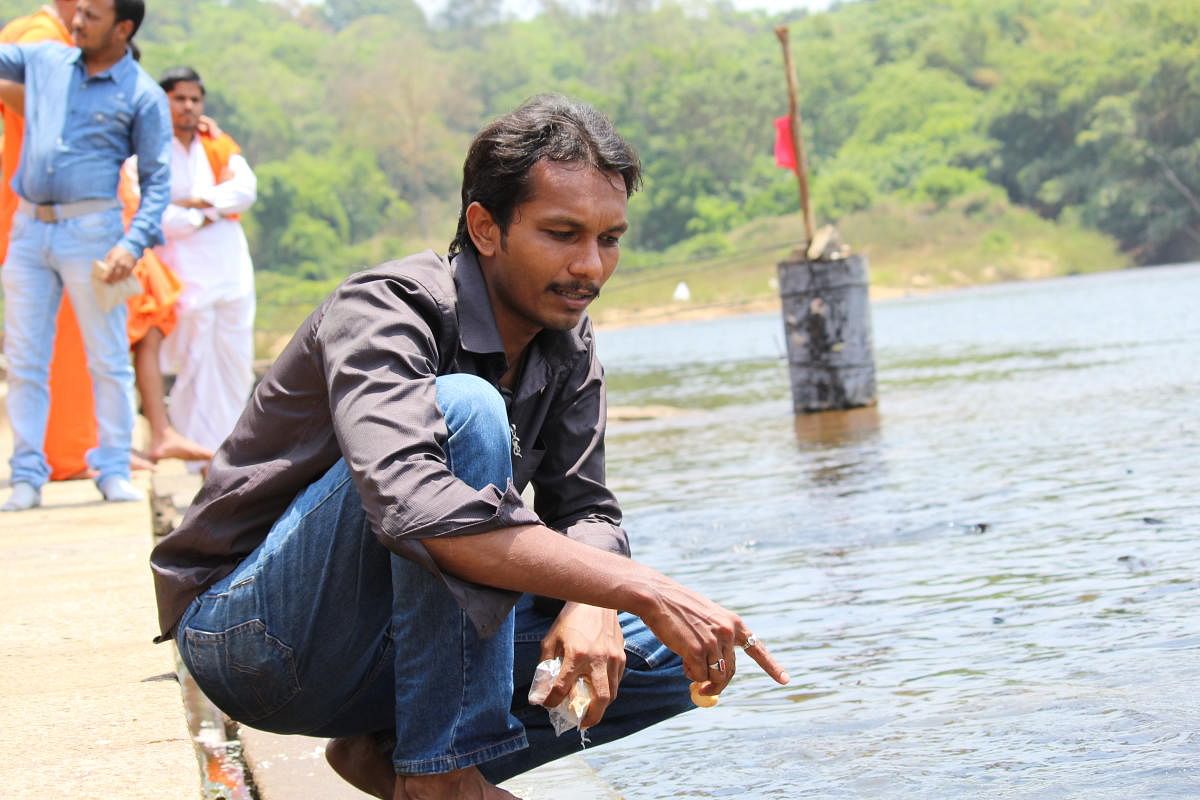

Umesh Bhat of Ramakrishnapura village, in Thirthahalli taluk, Shivamogga district wasn’t perturbed when he saw a female king cobra gathering leaf litter to build a nest in his garden. For, he knew whom to contact and why the pregnant cobra must not be disturbed in one the most critical phases of her life.
Umesh had attended one of the education programmes conducted by Ajay Giri, Field Director at the Agumbe Rainforest Research Station (ARRS), who informed that king cobras do not attack humans unprovoked and disturbing their habitation would affect their life cycle.
One phone call to the ARRS and for the next 25 days Umesh forgot that one of the world’s longest venomous snakes was laying its eggs in his backyard. For, during that period, Ajay was present as a mid-wife, along with Jaykumar, ARRS Base Manager, and other volunteers.
Thanks to the precautionary measures taken by him, the female king cobra built its nest, laid 25 eggs, and after 25 days, the hatchlings were carefully bagged and released in the nearby forest after gathering scientific variables and information. Umesh even celebrated their birthday by cutting a cake and distributing sweets to his neighbours.
All in
Ajay, a native of Akola, Maharashtra, has made Agumbe his second home, and the Kudremukh National Park, Agumbe Forest, Someshwara Wildlife Sanctuary his workstations. He is ever ready to travel to ensure that neither the king cobra — protected under Schedule II of the Indian Wildlife Protection Act of 1972 — is harmed nor humans or their cattle are at risk from the venom of the snake.
In his 11 years at the ARRS, Ajay has visited almost every village in Agumbe, Sringeri, Koppa, Hebri, Thirthahalli and other Western Ghats forest areas of the three Malnad districts to rescue snakes (even spectacled cobra, vipers, krait, pythons and other venomous or non-venomous snakes).
Ajay is not only a snake-catcher. It’s his passion to save snakes and in the same breath conduct research and education outreach, which has kept him in these evergreen forests for the last 11 years.
“I don’t wish to handle snakes,” said Ajay and added, “I just want to tell people not to disturb them and that they’ll leave human habitats on their own.” He bags snakes, scientifically, only when the snakes are inside homes, cattle shed or in a situation where the snake’s life is in danger.
Opportunity
To him, a rescue call is an opportunity to educate the local communities about the importance of the snakes in the eco-system, the vital role they play in protecting farmers’ crop, and why predictors like king cobra are necessary to keep the other venomous snakes in check. He also conducts awareness classes for the Forest Department staff, professional snake rescuers, volunteers and most importantly, students, who, according to him, are the future foot soldiers of Western Ghats.
People in the Malnad region have always been worshipping snakes. However, there were certain myths about king cobras. Constant education has dispelled them and built a healthy attitude towards them.
Changes
“When I first came here, I got up to 16 rescue calls every day during the king cobra breeding season (February to June, when they combat, mate and lay eggs). But after educating people about the cobras, they call to inform me about snake sightings and their movements, and are confident enough to tell me that there is no need to rescue them,” he said. “The sensitive forests in and around Agumbe are the last few safe places left for king cobras. Conservation of their habitat is important as deforestation and extensive human intervention inside the forest for development works have been destroying the snakes’ home. And depending only on the government to protect these predators is not right. Bringing in the community, especially youngsters, is key, and we have been working towards this,” he said.
Today students here volunteer to protect the snakes and help him in his research.